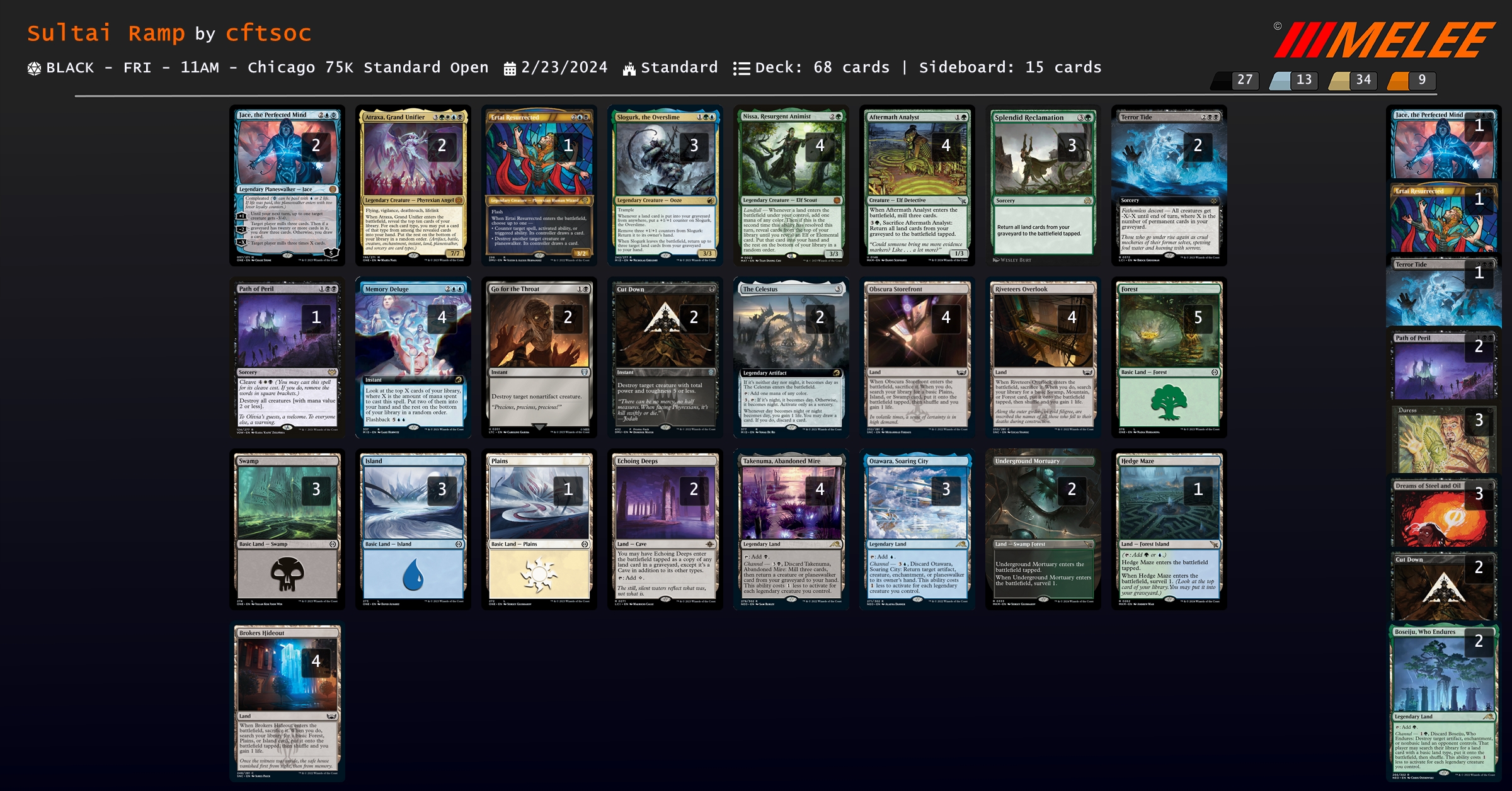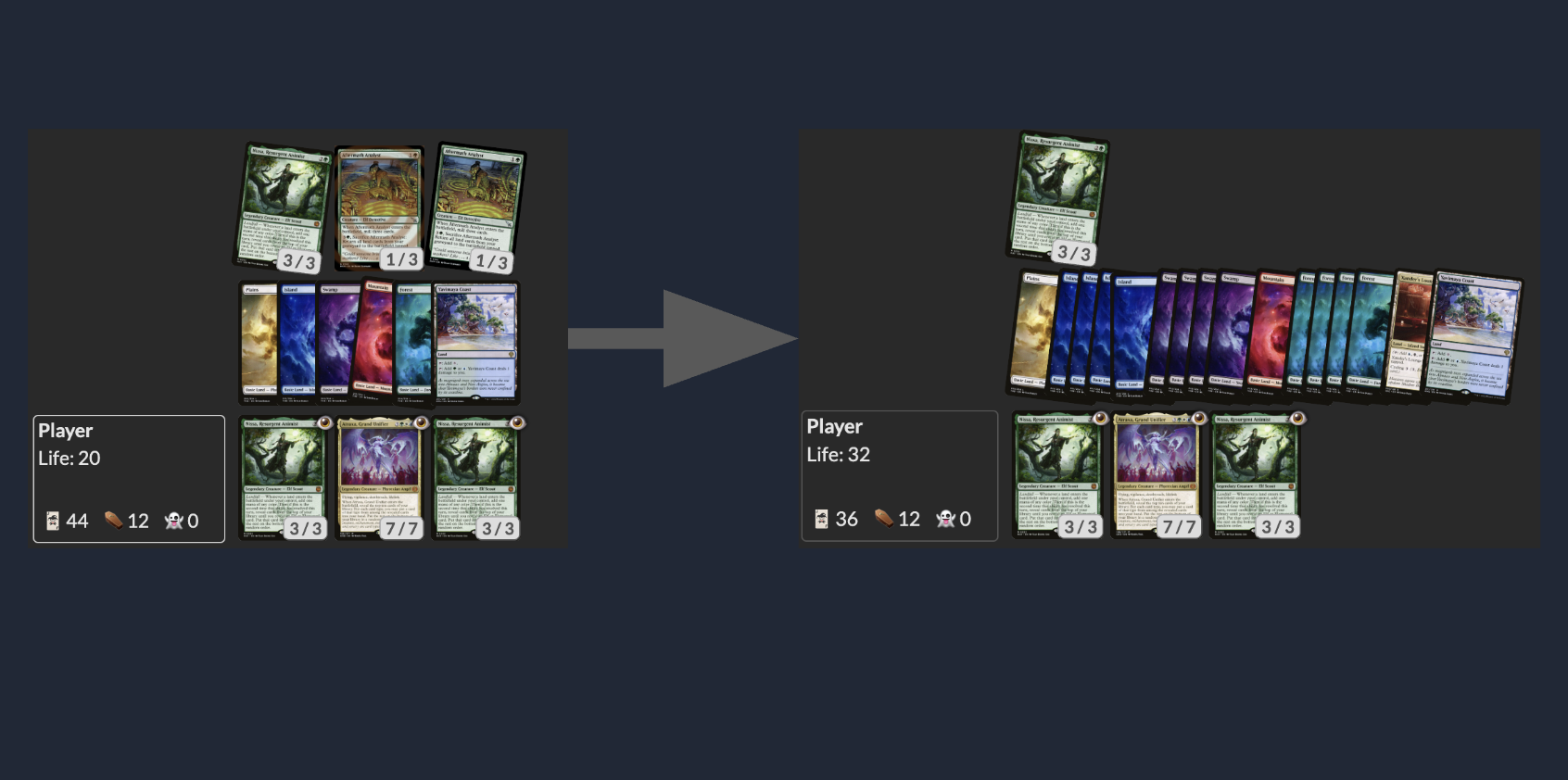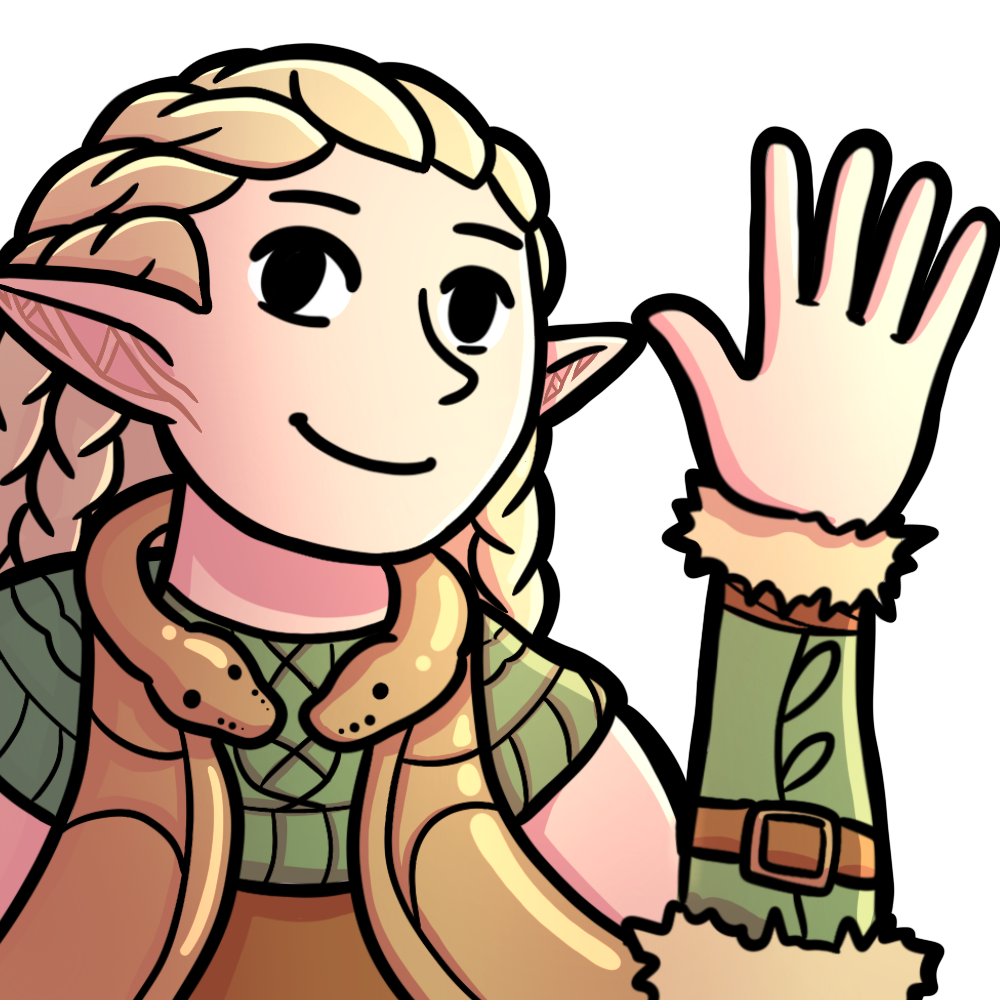Why 68 Cards is 113% Mathematically Optimal
03/15/2024
The title, of course, is clickbait.
If you somehow haven't heard, cftsoc won the Chicago Standard 75k a few weeks ago with "Sultai Ramp" - a deck featuring both my favorite card
Slogurk, the Overslime, and also notably 68 cards in the maindeck!
cftsoc's winning 75k deck
Since then, their deck - and other decks built around the same synergy of
SNC fetchlands, Nissa, Resurgent Animist, and Aftermath Analyst - have been gaining in popularity, with some variants like Temur Worldsoul's Rage decks going back down to 60 cards.I was actually tangentially involved in helping cft brew this deck - but really my only contribution was suggesting Slogurk (what did you expect? :P). The initial idea was one that they had for a long time - really they've been theorizing something like this ever since
Splendid Reclamation and SNC fetches have existed in Standard. But the deck got a real infusion of power with Aftermath Analyst in MKM, and they put all the pieces together to find a real powerhouse of a core synergy.So today I'm here to talk about the basics of the deck. What's the core engine? Why is it so powerful? How does it perform against various meta decks?
And, most importantly, why is it 68 cards? Is that actually good? Is that optimal?
Part 1: A Splendid Ramp Plan
Secretly (or perhaps not so secretly anymore), the most powerful constructed card to come out of MKM was
Aftermath Analyst. It's perhaps an unassuming uncommon if the only experience you have with it is in draft, but adding a mill 3 to Splendid Reclamation turns out to be quite potent.But of course, we can't just rely on the mill 3 from Analyst to get lands in our graveyard - that's fairly inconsistent. And we don't have real fetchlands in Standard, right...?
Well, not exactly! We don't have the classic
fetchlands that you'd see in Modern, but we do have the SNC fetchlands. And while they can only fetch lands into play tapped, they have two distinct advantages: they gain a life, which helps quite a bit against aggressive decks, but more importantly the immediately trigger on ETB, without the need of an activated ability.Notably, this means that effects like Aftermath Analyst, which put lands into play tapped, still will immediately cause SNC fetchlands to fetch - which means that SNC fetchlands are the same speed as regular untapped lands when returned with an Analyst or Splendid Reclamation!
Together, Analyst and SNC fetches can pretty easily and consistently allow you to ramp out 3-5 extra lands on turn 4, much faster still than a deck like Domain. But that by itself would be merely good and not quite busted. Being a bit faster than Domain is nice, but it comes with more fragility and restrictions too.
The final piece to tie this all together is
Nissa, Resurgent Animist. Nissa both finds Analysts when you play a fetchland (it's an elf!) and provides even more mana when you're going off, as lands you get back with Analyst will all produce mana from Nissa as well - with fetchlands producing double!This can easily result in turns where you start with 4 lands in play, and then use two Analysts in the same turn to end up with 14+ lands and still have 10 mana left after that to play a big ramp payoff.

Before and after, on the same turn - with 18 mana left over, enough to cast Atraxa and many spells besides. Also casual 12 life gained.
Part 2: A Deluge of Ramp Payoffs
Now that we have roughly infinite mana to work with, what can we do to win the game? Well, the first, most obvious answers are the two premier card draw spells in the format:
Memory Deluge and Atraxa, Grand Unifier.These two cards form the backbone of Control and Domain respectively for good reason! Atraxa is very nice as just the most efficient big card draw in the format, and the best thing to spend 7 mana on. On the flip side, Deluge helps us dig for ramp and answers early, and also can be milled by Analysts to get free Dig Through Times!
Beyond that, the answer becomes less clear. Temur lists have developed to use
Worldsoul's Rage as a card that both ramps early and pays off having tons of mana late; as well as Virtue of Strength, Shigeki, Jukai Visionary, and Colossal Skyturtle to execute massive recursion loops with the mana tripling from Virtue.But of course, my favorite way in Standard to use a pile of mana is none other than Slogurk.
The package of Slogurk, Takenuma, and Otawara is one I've talked about extensively in my other articles on Slogurk. And where other Slogurk lists look to make enough mana for channel lands by having legends and leveraging
Relic of Legends, we can slot a barebones Slogurk package into this ramp deck simply because it just naturally has access to 15+ mana every game.Not to mention, there's just several small cross-synergies going on! Fetchlands are both nice for growing Slogurk and for getting value when it dies; and channel lands are nice as just more lands that are likely to end up in the graveyard. Takenuma is also just a pretty good card lategame with castable Atraxas.
And then there's the infinite.
Of Course There Is
If I had a nickel for every time cftsoc built a Slogurk deck that randomly had an infinite combo in it without needing to play specific cards just to make the infinite work, I'd have two nickels. Which isn't a lot, but it's funny it happened twice.
That said, this infinite combo was much more intentional on their part, and actually a core part of the deck. Here's how it works:
Essentially, with enough lands in the graveyard, you can make Aftermath Analyst into a ritual of sorts with Nissa on the battlefield. Every land that enters and then immediately leaves the battlefield will make 1 mana from Nissa every single time you activate an Analyst. And notably, both fetchlands and channel lands beyond the first satisfy this, as the channel lands are legendary.
Notably, as you're doing this, if you have a Slogurk in play, you'll also get 1 counter for each such land - certainly enough to bounce Slogurk to hand. And if you're familiar with how Slogurk infinite loops work, this should start ringing some bells.
So. Aftermath Analyst costs 6 mana to activate. Channeling Takenuma to get back Analyst costs 2 mana if you have both a Slogurk and a Nissa in play. And then bouncing and replaying Slogurk to get back the Takenuma costs 3 mana.
Therefore, as long as you have 11 lands in the graveyard that will immediately sacrifice or legend rule themselves, Slogurk+Nissa+Analyst+Takenuma will allow you to go infinite!
11 lands is technically mana-neutral, but every time you play Analyst or channel Takenuma you mill 3 more cards, so eventually it should bootstrap itself to be mana positive. Then, you can use spare Takenumas to return copies of
Jace, the Perfected Mind to mill your opponent out, and immediately finish them off with an Ertai targeting one of their creatures.Here's a video of me demonstrating this loop on Arena.
Notably, you can use
Echoing Deeps to copy a channel land and keep that as your copy in play so that your real channel lands stay in the graveyard to be returned by Slogurk.Part 3: 113% Optimal
Here we get to the main reason why I'm writing this article today. I'm not going to go much more in-depth on the nitty-gritty details of the deck, as I both think it has a lot of room to change, especially with the new set release, and I want to save some of my thoughts on it for the PT. I certainly won't be doing a sideboard guide.
But hopefully this brief overview of the core of the deck was enough to get you excited to try your own builds of it! I've seen quite a few already, all using the package of Analyst, fetches, and Nissa to ramp; but all with different payoffs. Go wild! Experiment!
However, the last thing I do want to touch on is quite an important one, especially if you're going to try and build your own Analyst ramp deck: the question of deck size.
Why 68?
The reason why cftsoc registered 68 cards for the 75k was that 69 cards was not a "serious number of cards", and they wanted people to take their deck seriously.
Similarly, I won my 7-player Store Championships with a somewhat janky Analyst deck that had a lot of concessions to card availability, and I played 69 cards in that deck to signify that it was not to be taken seriously.
Okay but actually, why 68?
Vibes.
No, really, why?
Okay, okay. I'll stop joking around. The real answer is that more cards means better mana.
"Wait," you might say, "isn't that the wrong direction?" And normally you'd be right! The biggest reason for playing the minimum deck size is that larger decks are more inconsistent; and one of the biggest ways this shows is through the manabase, especially in formats like Pioneer and Standard where you quickly run out of good lands to play.
And you can prove this inconsistency exists for most decks - as I've done before in my article about playing more than forty cards in limited. But that proof comes with an important caveat: it doesn't apply to decks that routinely see all their cards.
And, of course, one of the best ways to see all of your cards is to have search effects. With all the fetchlands in Analyst decks, you'll see your entire deck many many times over. And even without fetches, you still just naturally see your entire deck with Deluges and Atraxas to boot!
So why does having all these search effects mean you want more than 60 cards? Well, this usually occurs when you have many cards that you want to have a certain minimum number of, but don't actually want to draw very often during the game. And in this specific case, this applies to basic lands.
Analyst decks need to run quite a few basics in general, as the total number determines the cap of how much you can ramp. How many you need exactly depends on the build, but I would certainly never want to register fewer than 12 - enough to play a 7 mana draw spell followed by a 5 mana spell. And you likely want even more than that still - I've heard arguments for wanting as many as 17 in a Temur deck!
But the problem is that basic lands are, well, not very good lands. The fetchlands that fetch them can count for up to three colored sources, but the basics themselves only count for one each. So if you try to use something like Frank Karsten's mana recommendations, you'll quickly find that even with the absolute minimum of 12 basics you'd have to play something like 19 dual lands on top of that to possibly hit your mana requirements!
And if it were just that, maybe it would be fine. 31 lands in 60 cards isn't unheard of - Slogurk Legends decks often reach that point as well. But notably, a third of their lands are channel lands, and so can count as spells - whereas the manabase we're trying to build so far has no utility whatsoever other than mana.
Speaking of channel lands, it gets worse. If you're planning on including a Slogurk package, you probably want something like 4 Takenumas and 3 Otawaras. And that adds even more single-color lands to your deck. With 12 basics and 7 channel lands, you'd need maybe 15 duals, and now we're up to 34! And sure, 7 of those lands can be channeled, but we're definitely worse at using those early-game than the Slogurk Legends, and 34 is just still way too many.
The solution to this is to go above 60. Where normally you run out of good lands to play as you add more cards, here you actually have the opposite problem: you are required to play a set number of mono-colored lands, so as you increase your deck size, you dilute the number of mono-colored lands in your deck, thus making your mana better, not worse.
cftsoc's deck ended up with 36 lands in 68 cards. And this was actually enough to cast their spells fairly consistently, while having a much better ratio of lands than 34 in 60!
What about Temur?
You may have seen 60-card Temur Analyst decks popping up as well. Why do those get to be only 60 cards, if 68 card gurk has to run 68 cards?
Well, it just comes down to the mana again. Temur's mana requirements are quite a bit more relaxed - while the Slogurk version needs 1BB and 2BB to cast black wraths, the Temur version never needs more than one red mana. And in addition to that, they don't run any channel lands.
And it turns out that just makes the mana good enough to play 60 cards, even with as many as 17 basics!
But is 68 optimal for Slogurk?
Honestly, that's an impossible question to answer. It's hard to say exactly how much impact playing 68 cards vs 60 is, and it's hard to say how that compares to the impact of having better mana and a better land ratio. But the vibes are certainly pretty good - I think cftsoc did a great job of building a good 68-card manabase!
However, if you do want to look at the numbers, there are tools out there to help with that. Karsten's numbers won't quite work for weird deck sizes - he goes with default assumptions of 25 lands in 60 cards and other normal deck shapes - but you can still run similar simulations for other kinds of decks!
I actually quite recently touched up a tool of mine for this - you can find it on this blog under the Manabases tab. After I did that, though, someone pointed out a much more polished tool that I hadn't heard of - MTG On Curve.
So if you want you can use my manabase calculator; but I would really recommend you check out MTG On Curve - what they have there is quite phenomenal for quickly checking your manabase.
You can even generate links to share around: here's cft's deck entered in there! You can see that the numbers are pretty good, with the only card that's all that sketchy being the one-of Path of Peril.
Conclusion
The reason that 68 card gurk is 68 cards simply comes down to the mana - when you have to play so many basics to be fetched, going up on cards actually improves your mana!
It's this kind of thinking outside the box that really has the potential to break formats. And I do think that the sheer amount of mana that Analyst decks have access to has kind of fundamentally broken Standard. While I'm not sure if any of the current iterations on the deck have a claim to being a tier 0 deck quite yet, I would be that some future iteration will do so.
And I wouldn't be surprised if said future iteration played more than 60.
P.S. quick addendum on 65/10 Lotus
#FreePalestine | Consider donating to UNWRA or PCRF, supporting protesters locally, and educating yourself.
